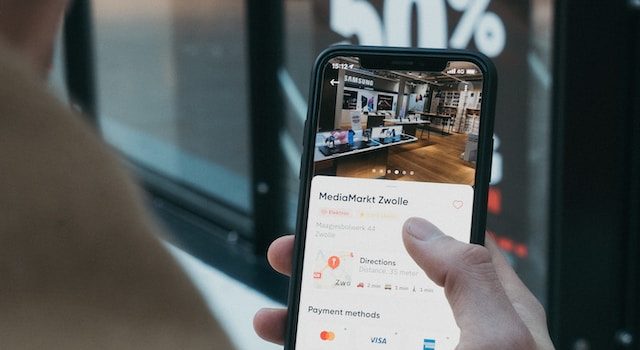
Characters are the heart and soul of any story. They breathe life into the plot, make it relatable, and keep us hooked till the very end. But creating memorable characters that stay with readers long after they’ve finished your book isn’t an easy feat. It requires a deep understanding of character development and how to craft compelling character arcs that resonate with your audience. So if you’re looking to take your writing to the next level and create unforgettable characters, look no further! In this blog post, we’ll be exploring tips from American literature’s best on how to develop remarkable characters that will leave a lasting impact on your readers. Let’s dive in!
What is Character Development?
Character development is the process of creating a believable and dynamic character that grows and changes throughout the story. It involves crafting a complex personality with strengths, weaknesses, quirks, and flaws that make them relatable to readers.
To achieve this, writers need to delve deep into their characters’ psyche and backstory. They should explore their motivations, desires, fears, and goals while also considering how external factors such as culture or environment shape their worldview.
When done well, character development drives the plot forward by influencing character decisions that lead to conflict or resolution. It creates an emotional connection between readers and characters that makes them invested in the story’s outcome.
However, it’s important not to confuse “character development” with “character description.” While physical attributes are essential for visualizing a character’s appearance in your mind’s eye – they don’t necessarily contribute much towards developing your protagonist/antagonist on an emotional level.
In summary – Character Development is all about bringing life into fictional individuals through emotions intertwined with backstories & experiences so that readers can connect emotionally with them beyond just surface-level descriptions!
Character Arc: The Life of a Character from Beginning to End
Creating a dynamic character arc is pivotal to crafting a memorable and engaging story. A character’s arc refers to the journey they undergo from the beginning of a narrative until its conclusion. This journey should involve growth, change, and development, allowing the reader to become invested in the character’s fate.
A well-crafted character arc involves more than just an interesting backstory or set of traits; it requires that characters encounter obstacles and challenges that force them out of their comfort zones. These experiences should shape who they are as individuals while also highlighting their strengths and weaknesses.
The most compelling arcs often feature characters who start out flawed, unlikable, or even villainous but eventually grow into heroes through perseverance and self-discovery. Conversely, some characters may experience significant setbacks or betrayals that ultimately lead them down darker paths.
Regardless of whether your protagonist becomes a hero or antihero by story’s end, constructing an effective arc demands consistency throughout all stages of development. Each decision made – every success and failure – must align with what readers have come to understand about your protagonist so far.
When executed correctly, these arcs allow readers to form deep connections with fictional personalities long after they’ve finished reading their stories. By providing believable reasons for why our favorite protagonists act as they do over time allows us to see ourselves within them — experiencing pain when they suffer defeat but rejoicing in triumphs alongside them when victory is achieved at last!
The 5 Steps of Character Development
When it comes to creating memorable characters in your fiction, character development is key. It’s what takes a two-dimensional figure on paper and brings them to life as a fully-formed person with their own unique quirks and flaws.
So how do you develop a character that readers will remember long after they’ve finished your book? Here are 5 steps for effective character development:
1. Start with backstory: Every character has a past that shapes who they are today. Dig deep into your characters’ histories – their childhood, their family life, their past relationships – to understand what motivates them and why they behave the way they do.
2. Define personality traits: What makes your character tick? Are they outgoing or introverted? Impulsive or cautious? Take time to define each of your characters’ personality traits so that you can write consistent behavior throughout the story.
3. Give them goals: Characters need something to strive for in order for readers to root for them. Whether it’s saving the world or finding love, give each of your characters clear goals that drive the plot forward.
4. Create flaws: Perfect characters make for boring stories! Flaws make characters relatable and interesting – whether it’s an addiction or a phobia, give each of your characters at least one major flaw that affects their decisions throughout the story.
5. Show growth: A good character arc shows how a person changes over time due to experiences in the story. Make sure there is some kind of growth from beginning until end- even if small- showing positive change will keep readers invested till the very end!
By following these five steps, you’ll be well on your way towards developing memorable fictional personalities that readers won’t soon forget!
How to Create Memorable Characters in Your Fiction
Creating memorable characters is one of the most important aspects of writing fiction. A well-crafted character can make a story come to life, and leave a lasting impression on readers. Here are some tips for creating unforgettable characters in your own work.
Firstly, give your characters unique personalities that set them apart from each other. Think about what makes each character interesting or different, whether it’s their backstory, quirks, or beliefs.
Secondly, develop your character’s motivations and goals. What do they want? Why do they want it? How far are they willing to go to get it? These questions will help you create complex and believable characters that readers can relate to.
Thirdly, show don’t tell! Rather than telling the reader about your character’s personality traits or backstory through exposition-heavy paragraphs try revealing these details throughout the story via dialogue or action scenes.
Fourthly, make sure that your protagonist has flaws as well as strengths – this will make them more human and relatable. Characters who struggle with weaknesses become more compelling when they eventually overcome them!
Finally , consider how each character interacts with others in the story – relationships add depth and nuance to both individual characters and the overall plot itself!
Conclusion
Creating memorable characters is a crucial aspect of writing fiction. By following the steps of character development and focusing on character arcs, writers can breathe life into their stories and captivate readers with unforgettable characters.
Remember to give your characters depth by exploring their backstory, desires, flaws, and motivations. Don’t be afraid to make them imperfect or vulnerable – this will only make them more relatable to readers.
Additionally, it’s important to ensure that each character serves a purpose in the story and contributes to its overall theme. Avoid including flat or one-dimensional characters who exist solely for plot convenience.
By using tips from American Literature’s best authors such as Toni Morrison or Ernest Hemingway, you can learn from some of the greatest examples in literature history when it comes down to crafting great written pieces.
Ultimately, creating memorable characters requires time and effort but pays off immensely in making your story stand out among others. By taking these steps into consideration you are not only able to create engaging plots but also craft wonderful literary masterpieces!












